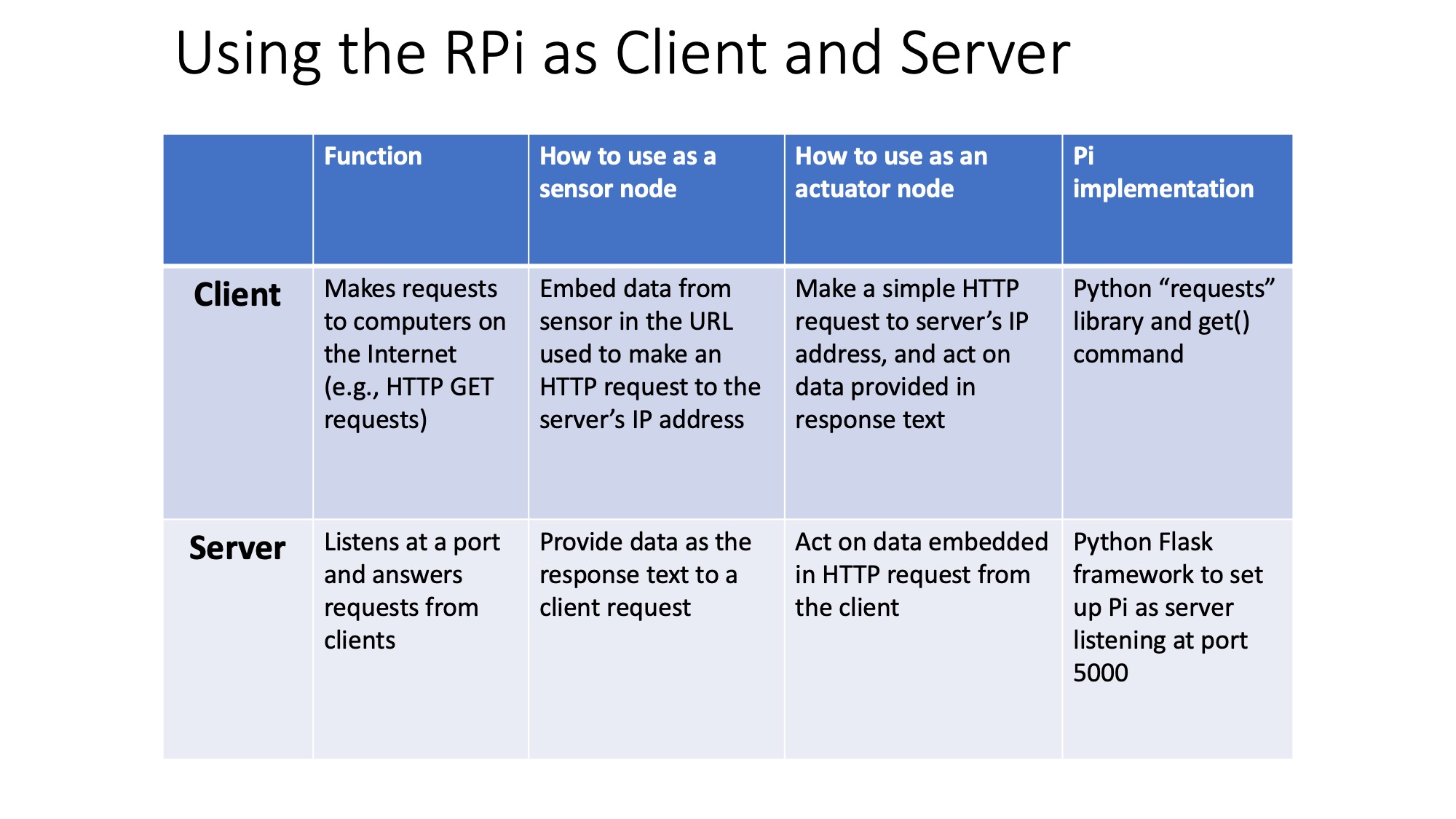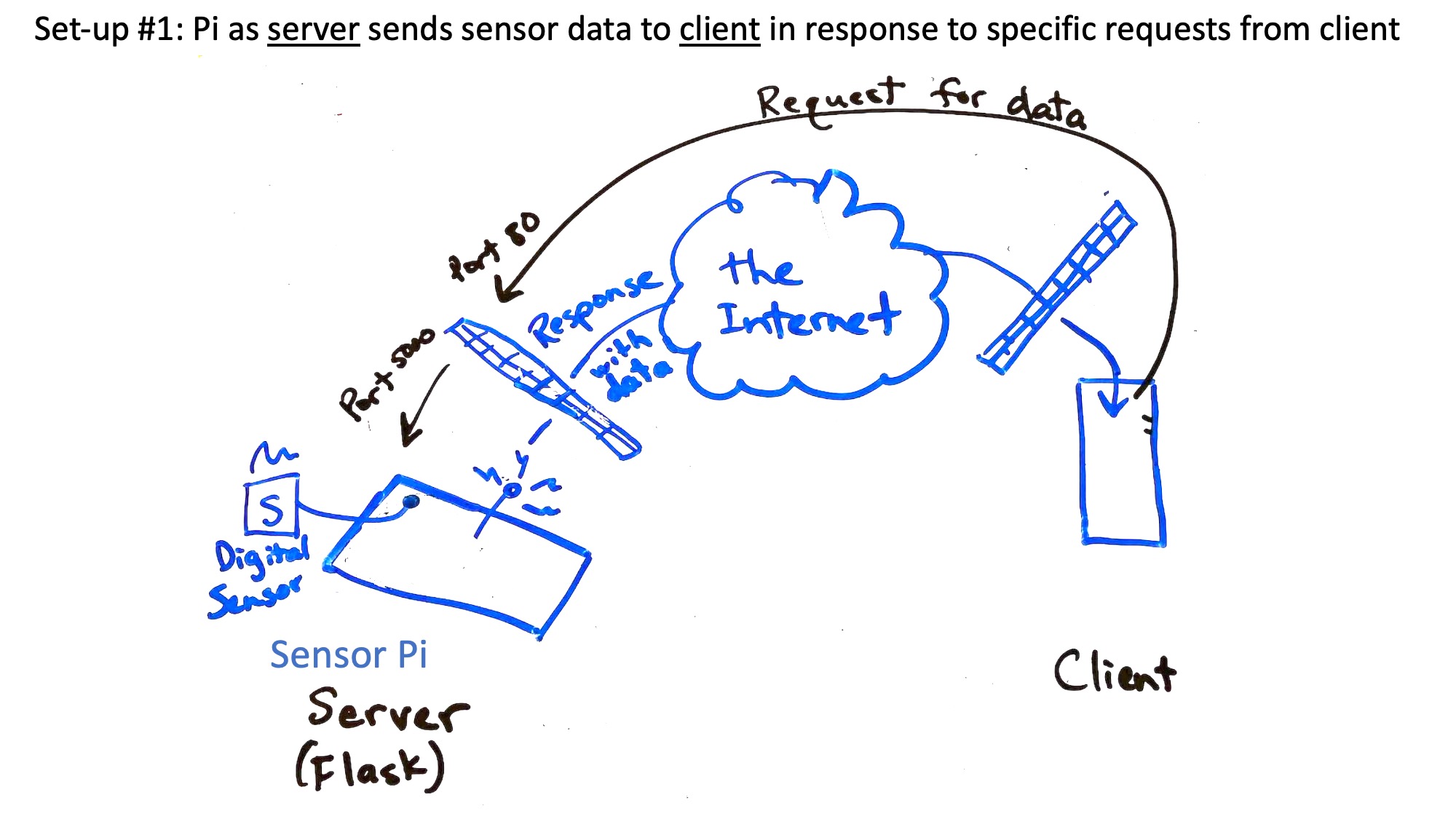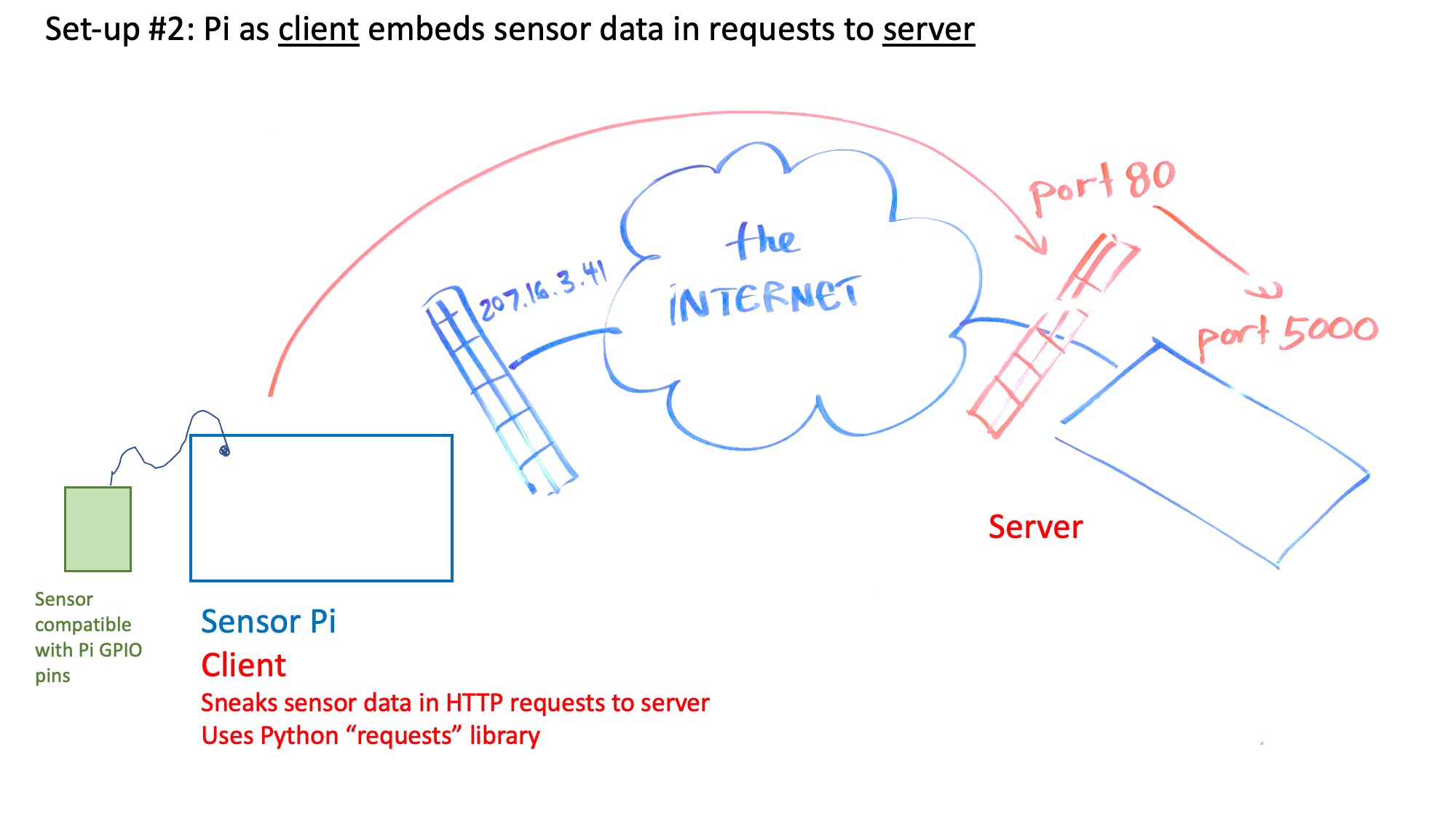Servers and clients #
A server is a program that listens for requests from clients. When it receives requests, it replies to them.
A client is a program that makes requests of servers.
Implementation on microcontrollers #
There are zillions of ways to write servers and clients– lots of different programming languages, architectures, and libraries you could use. But, to narrow things down a little bit, here are a few places to start with the Raspberry Pi.

Raspberry Pi server #

For code, try writing a function that executes if a specific HTTP request is made, like the /senddata example below.
from flask import Flask
app = Flask(__name__)
import gpiozero
from gpiozero import DistanceSensor
# Waits for an HTTP request ending in "senddata"
@app.route('/senddata')
def send_data():
# echo and trigger of the sensor are connected to GPIO pins 23 and 24
ultrasonic = DistanceSensor(echo=23, trigger=24)
reading = int(ultrasonic.distance)
# returns to the client the value of the variable <reading>
return 'sensor reading is {0}'.format(reading)
For more details, see the Flask example on our Raspberry Pi programming page.
Raspberry Pi client #

For code, try using the Python library called Requests.
You can install it with: sudo apt install python3-requests
Your code might start like this:
import requests
reply = requests.get('http://192.168.1.123:5000/sensor/reading')
print(reply.text)
Demo videos showing some client/server setup #
Check them out here